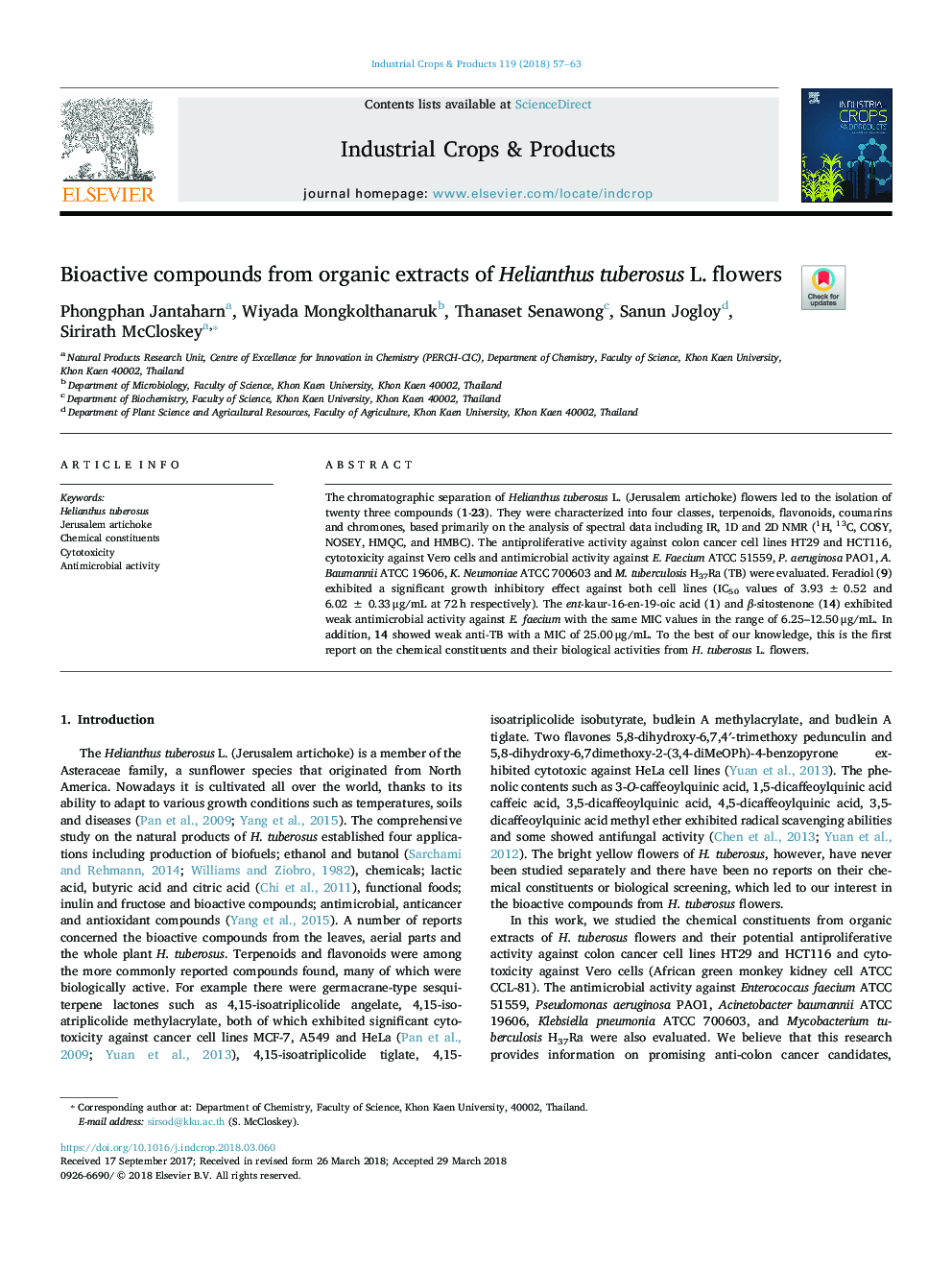| Article ID | Journal | Published Year | Pages | File Type |
|---|---|---|---|---|
| 8879960 | Industrial Crops and Products | 2018 | 7 Pages |
Abstract
The chromatographic separation of Helianthus tuberosus L. (Jerusalem artichoke) flowers led to the isolation of twenty three compounds (1-23). They were characterized into four classes, terpenoids, flavonoids, coumarins and chromones, based primarily on the analysis of spectral data including IR, 1D and 2D NMR (1H, 13C, COSY, NOSEY, HMQC, and HMBC). The antiproliferative activity against colon cancer cell lines HT29 and HCT116, cytotoxicity against Vero cells and antimicrobial activity against E. Faecium ATCC 51559, P. aeruginosa PAO1, A. Baumannii ATCC 19606, K. Neumoniae ATCC 700603 and M. tuberculosis H37Ra (TB) were evaluated. Feradiol (9) exhibited a significant growth inhibitory effect against both cell lines (IC50 values of 3.93â¯Â±â¯0.52 and 6.02â¯Â±â¯0.33â¯Î¼g/mL at 72â¯h respectively). The ent-kaur-16-en-19-oic acid (1) and β-sitostenone (14) exhibited weak antimicrobial activity against E. faecium with the same MIC values in the range of 6.25-12.50â¯Î¼g/mL. In addition, 14 showed weak anti-TB with a MIC of 25.00â¯Î¼g/mL. To the best of our knowledge, this is the first report on the chemical constituents and their biological activities from H. tuberosus L. flowers.
Keywords
Related Topics
Life Sciences
Agricultural and Biological Sciences
Agronomy and Crop Science
Authors
Phongphan Jantaharn, Wiyada Mongkolthanaruk, Thanaset Senawong, Sanun Jogloy, Sirirath McCloskey,
